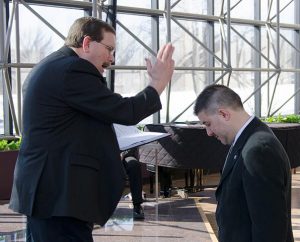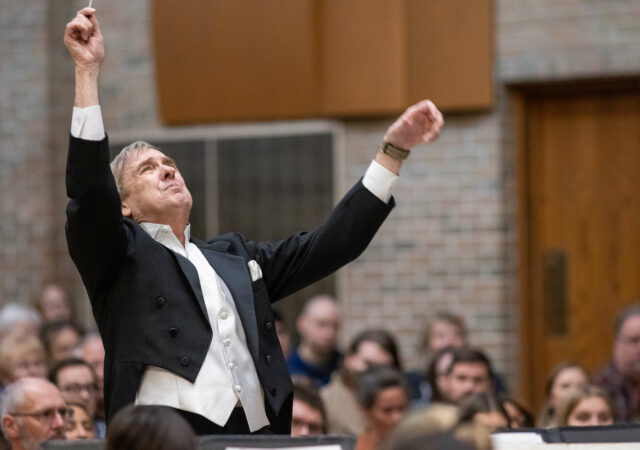By Roger Drinnon
ST. LOUIS — The LCMS Board for International Mission (BIM) confirmed that the Synod is more than halfway toward the goal of doubling its number of career missionaries during a global resurgence of mission opportunities that were assessed during the board’s meeting here Jan. 30-31 at Concordia Publishing House (CPH).

In keeping with 2013 LCMS convention Resolution 1-11, the Missouri Synod is approaching 105 career missionaries, up from 68 in July 2013. But this historic milestone is not without challenges, as the Synod works to establish additional systems for missionary care and ensure mission efforts are coordinated to be as effective as possible.
“The Church made it clear in convention, and Lutherans around the world are making it clear, that there is a renaissance in mission and this board is working hard to respond with policies that can support that renaissance,” said BIM Chairman Rev. Bernhard M. Seter.
During the meeting, the BIM issued an additional 16 calls or appointments for career and Globally Engaged in Outreach (GEO, serving two to three years) missionaries to serve in Africa, Asia, Eurasia and Latin America. Seter said the board is thrilled not only about the quantity but also the quality of missionaries entering the field.
As the LCMS looks to better coordinate missionary work with partner church bodies and their national governments toward more safe, efficient and unified efforts, the board also looked at concerns stemming from the Commission on Constitutional Matters (CCM) opinion circulated last year regarding the interpretation of the final paragraph of Synod Bylaw 3.8.3 per Synod’s 2013 Handbook, Page 114, and its reference to the Board for International Mission as “the only sending agency through which workers and funds are sent to the foreign areas of the Synod.” The full CCM opinion is available for downloading here.
“The CCM bylaw opinion caused much discussion and some areas of concern,” said Seter. “We had the chance to [clarify] that we are looking for collaboration, communication and deeper partnerships with mission societies and Recognized Service Organizations (RSOs). The mission field is large and varied, and we can support each other and work together, if we keep the lines of communication open.”
The Association of Lutheran Mission Agencies (ALMA) annual conference was held contiguously in St. Louis, Jan. 29-30. Seter, BIM Vice-Chairman Kermit “Butch” Almstedt and the Rev. Dr. Albert Collver III, LCMS director of Church Relations and director of Regional Operations for the Office of International Mission, temporarily broke from the BIM meeting to attend the conference for discussions on working together with RSOs and mission agencies. ALMA began in 1996 with 10 mission societies and now comprises as many as 65 mission societies and mission-related agencies.
In turn, the Rev. Dr. James Tino, executive director of ALMA, and the Rev. Todd Roeske of Alaska Mission for Christ attended a portion of the BIM meeting and discussed questions raised by others concerning the implications of the CCM’s opinion. Seter said the discussions were both helpful and practical for shaping future policies.
The BIM also celebrated the 28th anniversary of the Rev. Dr. David Erber’s arrival in Nigeria. Erber and his wife, Joyce, have served in Africa since 1986. Before David Erber served as area facilitator in West Africa, his family lived among the Bokyi people in Northern Cross River State, Nigeria, where he was engaged in church planting and leadership development. He was invited to the BIM to talk about challenges and opportunities in the West Africa mission field. Erber noted that in his entire career, he has not seen as many missionaries come to West Africa as have arrived in the past two years.
“In 1987, there were 23 [missionary] families and in 1990, 30 families in Nigeria alone,” said Erber. “A year ago at this time, we were the only missionaries in all of West Africa who were there more than a couple of months. To see this now, where we are focused on getting more missionaries, shows the Network Supported Missionary funding model is working and helps make this possible.”
With a global mission field ripe for the harvest, BIM members and other Synod participants expressed their gratitude for the growing number of missionaries and for the people, agencies and congregations who support them and enable them to proclaim the Gospel worldwide.
“I am thrilled that we are approaching the doubling of the number of called international missionaries, and we won’t stop there,” said LCMS President Rev. Dr. Matthew C. Harrison. “If our Synod continues to focus on this international work, we can blow the lid off our all-time-high missionary number.”
Harrison thanked the Lutheran Women’s Missionary League, donors and sponsors for financial support provided to bolster the Synod’s mission efforts and he lauded CPH “for being a marvelous partner in mission.”
“The invitation from CPH to hold our meeting [at CPH in St. Louis] and tour the site was a wonderful opportunity to remember the fantastic partnership that CPH has with the Church and our missionaries,” echoed Seter.
The next BIM meeting is scheduled for May 29-30 in St. Louis.
Roger Drinnon (roger.drinnon@lcms.org) is manager of Editorial Services for LCMS Communications.
Posted Feb. 24, 2015/Updated Feb. 25, 2015/Updated Oct. 10, 2022





I feel that training and supporting local native pastors could expand this renaissance faster and more effectively. Chin Lak Aung in Yangon needs funds to travel to his home state of Chin State. He has plans to lead in training other pastors there in early March. Then they plan to reach 15 villages. Contact his about his plans and the help he needs. People in Chin State are waiting for him. Please pray for him and send some support
Supporting local native missionaries is very important and fully in step with the mission work of apostle Paul’s model. Our American missionaries are great in starting the mission and providing education and witness. Natives know the culture and the needs. There also may be an economic factor for more local missionaries that can be supported for the same amount of contributions. Telling the congregations about Mission experiences by missionaries on furlough also engages the sponsoring congregations more vividly.